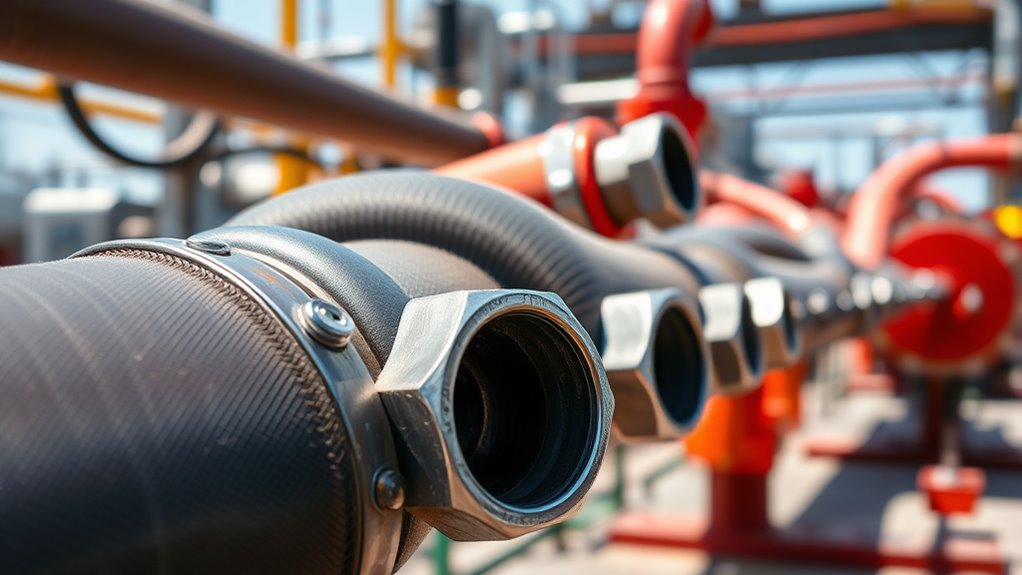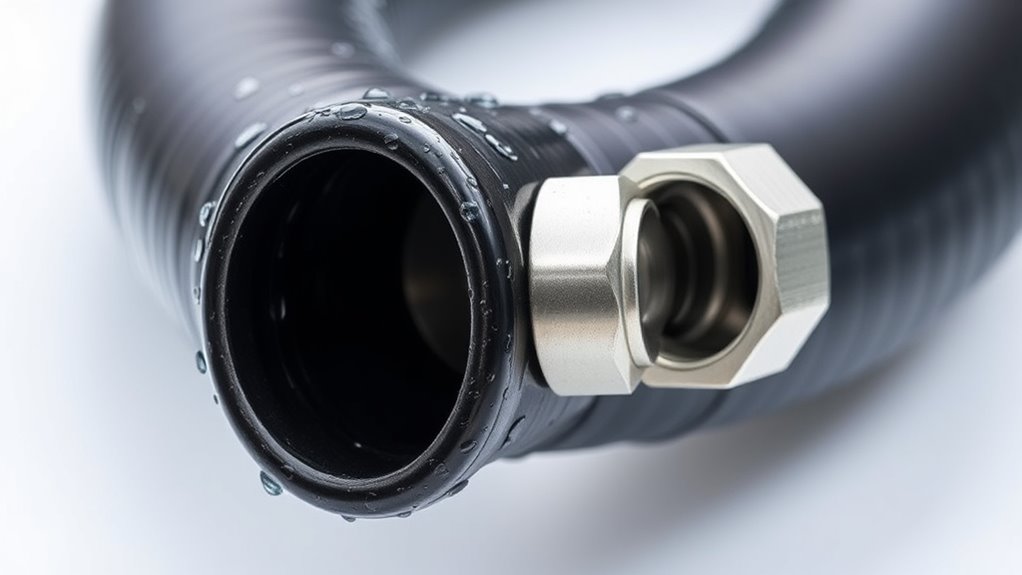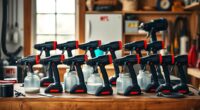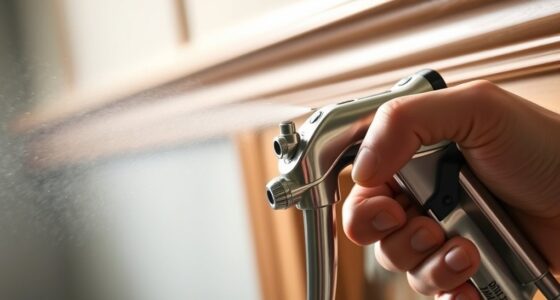Choosing the right hose diameter is vital to prevent your pump from starving and guarantee smooth flow. If the hose is too narrow, it increases fluid velocity and causes pressure drops, risking pump damage. On the other hand, an overly wide hose can slow flow and reduce pressure control. Balancing the hose size with your system’s flow needs and pressure demands helps maintain efficiency and longevity — and there’s more to think about for ideal results.
Key Takeaways
- Select a hose diameter that matches your system’s flow rate and pressure requirements to prevent flow restriction.
- Avoid using hoses that are too narrow, as they increase velocity and cause friction loss, risking pump starvation.
- Consider fluid viscosity and operating pressure to choose a size that maintains steady flow and reduces turbulence.
- Use friction loss charts and calculations to determine the optimal diameter for energy-efficient and reliable operation.
- Balance hose size to ensure adequate flow without unnecessary cost or handling issues, preventing pump starvation.

Choosing the right hose diameter is essential for ensuring efficient fluid flow and preventing system issues. When you select a hose that’s too narrow, it can restrict flow, causing pressure drops and reducing overall system performance. On the other hand, a hose that’s too wide may seem beneficial, but it can lead to unnecessary costs, increased weight, and potential handling difficulties. Therefore, understanding how to balance these factors is vital for maintaining ideal operation.
The diameter of your hose directly impacts the velocity and volume of fluid passing through it. If the hose is too small, fluid velocity increases, which can cause friction loss, vibration, and even damage to the pump or hose over time. Excessive velocity not only hampers flow efficiency but also increases wear, leading to more frequent replacements. Conversely, a hose with a diameter that’s too large allows fluid to move at a slower pace, which might seem advantageous, but it can lead to poor pressure management and inefficient use of energy. You want a diameter that matches the flow rate needed for your application without causing unnecessary pressure drops or surges.
To choose correctly, start by evaluating your system’s flow requirements. Consider the volume of fluid you need to move within a specific timeframe and the maximum pressure your pump can generate. With these figures, you can determine the ideal hose diameter using flow rate calculations and friction loss charts. This process helps you find a balance where flow is smooth, pressure is maintained, and energy consumption remains efficient. Remember, a slight increase in hose diameter can greatly reduce friction loss, especially over long distances, so don’t overlook the benefits of slightly larger sizes if your system allows.
Additionally, consider the nature of the fluid and operating conditions. Thicker or more viscous fluids require larger diameters to maintain flow, while high-pressure systems benefit from hoses that can handle increased stress without deforming or bursting. The material of the hose also plays a role; flexible hoses might be easier to handle but may need to be slightly larger to compensate for flexibility and movement. Understanding the pressure dynamics involved can help you select the most suitable hose size for your system.
Frequently Asked Questions
How Does Hose Length Affect Pump Performance?
Hose length directly impacts your pump’s performance by increasing pressure loss as it gets longer. Longer hoses create more resistance, causing the pump to work harder and potentially reducing flow rate. Keep hoses as short as possible to maintain ideal pressure and flow. Regularly check for leaks or blockages in extended hoses, and consider upgrading to a larger diameter if longer lengths are necessary to minimize pressure drops.
Can Changing Hose Material Impact Flow Rate?
Did you know that using a smoother hose material can increase flow rate by up to 20%? Changing your hose material definitely impacts flow rate—stiffer or rougher materials cause more friction, reducing efficiency. Opt for smoother, flexible materials like silicone or PVC to keep the flow steady and maximize pump performance. This simple switch can save you energy and make certain your system runs smoothly without unnecessary pressure drops.
What Safety Precautions Should Be Taken During Hose Installation?
During hose installation, you should wear appropriate safety gear, such as gloves and eye protection, to prevent injuries. Make sure the system is turned off and depressurized before connecting hoses. Check that hoses are compatible with the fluid and pressure, and secure fittings tightly to prevent leaks. Avoid kinks or twists in the hose, and inspect connections for damage. Regularly maintain and replace hoses to guarantee safety and peak performance.
How Often Should Hose Diameters Be Inspected or Replaced?
You should inspect your hose diameters regularly, ideally every few months, to catch any signs of wear or deformation early. Replace hoses immediately if you notice cracks, leaks, or significant thinning, as these can disrupt flow and threaten pump performance. Skipping these checks risks starving your pump, leading to costly downtime or damage. Stay vigilant, and your system will operate smoothly and safely for years to come.
Are There Specific Hose Sizes Recommended for Different Pump Types?
Yes, specific hose sizes are recommended for different pump types to guarantee ideal performance. You should select a hose diameter that matches your pump’s flow rate and pressure requirements. For example, centrifugal pumps often need larger hoses, while smaller pumps work with narrower ones. Always refer to your pump manufacturer’s guidelines or consult an expert to choose the correct size, preventing issues like cavitation or flow restriction that could damage your system.
Conclusion
Remember, selecting the right hose diameter isn’t just about flow; it’s about avoiding the trap of starving your pump, much like Icarus flying too close to the sun. If you overlook this detail, your system’s efficiency could plummet, leaving you stranded like Icarus falling. Pay attention to your hose size, stay grounded in good practices, and keep your pump thriving—because in this game, size really does matter. Don’t let poor choices be your downfall.










